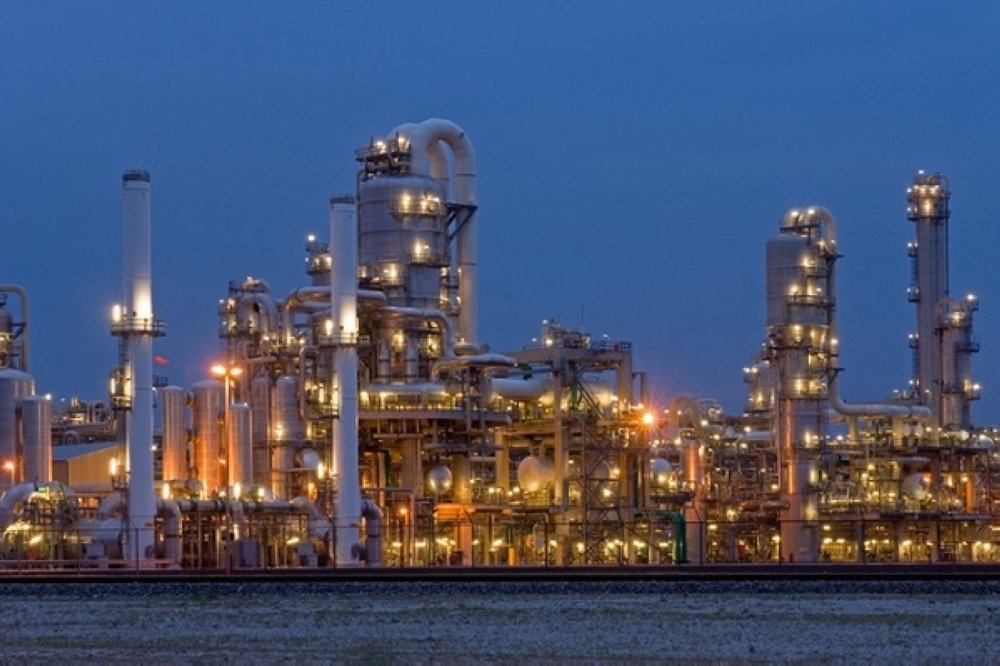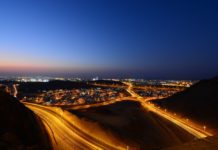Oman has given a strong message that it will continue investing in oil and gas development irrespective of price fluctuations in the international market
Oman will continue its investment in oil and gas projects to sustain production in the long-run. As part of the plan, the Sultanate’s national oil company – Petroleum Development Oman (PDO) – is planning to invest more than $20 billion in exploration and production till 2021 as the company aims to sustain its long-term hydrocarbon output. However, the capital expenditure for 2018 alone is estimated at $4.1 billion.
In an apparent move to fund its capital expenditure without taking much support from the government, the majority state-owned oil company plans to leverage on some of its assets, for which the final decision is expected to be taken in the second half of 2018. In 2017, PDO’s capital expenditure was around $5.8 billion, while operating expenditure stood at $1.8 billion. The average production of crude production of the national oil firm stood at 582,196 barrels per day (bpd) in 2017. PDO’s enhanced oil recovery (EOR) projects, which were developed with huge investments in different oil fields, are contributing immensely to the overall production.
In-Country Value
Further, PDO is strengthening its in-country value (ICV) by awarding major contracts to local community contractors. Early this year, the company has signed pacts with five Omani firms — Abraj Energy Services, MB Petroleum Services, Cactus Premier Drilling Services, BaOmar Oil Field Services and Mideast Integrated Drilling & Well Services Company (Midwesco) — for providing work-over services on wells in the company’s concession area, including modification, repair and maintenance, suspension and abandonment. Under the terms of contracts, the companies will support local small and medium enterprises (SMEs) and local community contractors (LCCs). They will also make contributions to a fund to train and enhance the skills and capabilities of Omanis who work in the oil and gas sector and beyond.
Also, the Oman government’s planned investment in the oil and gas sector is estimated at $11 billion in 2018. A major chunk of this investment will be for strengthening oil and gas production of PDO. Since BP recently commissioned Khazaan tight gas project, there is no need for immediate investment in this project. The investment in oil and gas sector also include a major downstream project – Duqm Refinery.
Exploration and production
A joint venture of Oman Oil Company (OOC) and Kuwait Petroleum International (KPI), Duqm Refinery has awarded several major packages that together constitute the estimated $5.65 billion refinery project and associated infrastructure planned for implementation at the Special Economic Zone (SEZ) in Duqm.
The first of these packages, labelled EPC 1, and comprising the main process units of the refinery, went to the consortium of Tecnicas Reunidas (Spain) and Daewoo Engineering & Construction (South Korea). The second package, dubbed EPC 2 — covering the construction of utilities and offsite facilities — was awarded to the joint venture of Petrofac (UK) and Samsung Engineering (South Korea). Italian oil and gas contractor Saipem International was the collective winner of three other components of the mammoth refinery project contract – EPC 3. These entail the construction of a product storage and export terminal at Duqm Port; eight storage tanks at Ras Markaz where a giant crude oil storage park is planned; and an 80 km crude oil pipeline from Duqm SEZ to Ras Markaz.
Once operational in 2021, the refining capacity will reach 230,000 barrels per day and will produce a number of key refinery products, including diesel, jet fuel, naphtha and liquefied petroleum gas. The total investment for Duqm Refinery is estimated at $5.65 billion, which will be funded by way of a debt-equity ratio of 60:40. Of the 40 per cent equity, 50 per cent share will be invested by the Kuwaiti partner and the remaining 50 per cent will be by Oman’s state-owned firm. Oman’s government is also expected to award four oil and gas blocks to international oil companies on a production sharing basis this year. The Sultanate’s Ministry of Oil and Gas has started a bidding round for blocks 43B, 47, 51 and 65 in September, 2017. Of these four blocks, 51 is an offshore block, while all others are onshore blocks. Also, out of the four blocks, three blocks have crude oil deposits, while the fourth one is mainly a gas block. The launch of the new round of bidding comes at a time when the crude oil prices touched a recent high, which has helped to get better response.
According to the plan, there are currently over 10 open blocks, including the four blocks under tendering process, for development. Early this year, the Ministry of Oil and Gas has awarded oil concession block 57 to Lebanon-based Petroleb SAL. The ministry signed an exploration and production-sharing agreement with the Lebanese firm for developing the block. Block 57, also known as Al Afif onshore oil block and spread over an area of 2,262 square kilometres, lies in the southwestern part of the Sultanate and is situated between South Oman Salt Basin and the Rub al Khali Basin. As per the agreement, Petroleb has committed to carrying out geological and geophysical studies along with 3D seismic acquisition and drill wells during exploration periods.
In fact, Oman government has been encouraging multinational oil giants to find new reservoirs in a move to sustain production levels. As huge investment is required for bringing crude oil and natural gas above the ground in view of the peculiar nature of reservoirs in the Sultanate, the government has been encouraging multinational firms to undertake exploration and production on a production sharing basis.
In 2017, Oman government signed five exploration and production sharing agreements with local and multinational oil giants for developing various oilfields in the country. The deals were signed for developing onshore blocks 49, 31, 30, offshore block 52 and 48. The first agreement was signed with Swedish firm Tethys Oil for block 49 in a large area of 15,439 square kilometres, while the second pact was with ARA Petroleum for exploring oil in block 31, which is spread in an area of 8,528 square kilometres. The third agreement for block 30, in an area of 1,185 square kilometres, was signed with a joint venture of Occidental Oman and Oman Oil Company Exploration and Production.
Also, the fourth was signed between the ministry and a joint venture of Eni Spa and Oman Oil Company Exploration and Production for conducting exploration in block 52, an offshore block occupying an area of 90,760 square kilometres. The government also signed an exploration and production sharing agreement with Oman Oil Company Exploration and Production for developing block 48, located between the Al Wusta and Al Dhahira regions. Under the agreement, the Oman Oil Company Exploration and Production, which is a subsidiary of the state-owned Oman Oil Company, will explore oil and gas in an area of 2,995 square kilometres. Recently, Indian Oil Corporation picked up a 17 per cent stake in the Mukhaizna oilfield from Anglo-Dutch major Shell for $329 million. The onshore field is one of the country’s largest and contributes to 13 per cent of total production. However, Oman also saw several major oil companies exit its various concessions in the last few years as low crude prices at that point of time made profitability challenging in the country’s maturing fields.
Stable output
As far as the production is concerned, the Sultanate’s crude oil and condensate output remained more or less steady at 116.06 million barrels for the first four months of 2018, compared to 116.10 million barrels for the same period of last year. Of the total production, crude oil output alone declined by 2.2 per cent to 103.27 million barrels during January-April period of 2018, while production of condensates increased substantially by 22 per cent to 12.80 million barrels, according to official statistics.
In fact, the daily average production of crude oil also remained stable at 967,200 barrels during January-April period of 2018, compared 967,500 barrels for the same period of 2017. The daily average crude oil production is expected at 950,000 barrels per day (bpd) during the next three to five years as the major producers have enough potential to raise output. But the Sultanate has to comply with its commitment to cut production by 45,000 barrels per day (or 5 per cent of daily production), which was reached with Opec and non-Opec countries in eliminating a glut in the market. According to an earlier agreement, the 21 nations participating in the supply cuts are collectively trying to reduce the output by almost 1.8 million barrels a day, in most cases, using October 2016 levels as the starting point.
On the positive side, the average price of Oman Crude soared by 22 per cent to $62.9 per barrel in the January-April period of this year, from $51.6 a barrel in the same period of last year. The country’s total crude oil exports rose by 1.1 per cent to 98.54 million barrels during January-April period of 2018, from 97.50 million barrels for the same period of last year. China retained its position as the leading destination for the Sultanate’s crude oil exports during January-April period of 2018. China imported 77.23 million barrels of Oman Crude during the January-April period of this year, out of the country’s 98.54 million barrel exports. Although there was a 9.2 per cent fall in the Chinese imports, the country constituted 78.37 per cent of Oman’s total exports. Surprisingly, India’s imports of Omani crude oil leaped by 2,944.1 per cent to 15.25 million barrels during the first four months of 2018. This was followed by Japan with an import of 3.63 million barrels. The Sultanate’s production of crude oil and condensates touched 354.26 million barrels in 2017, with an export of 284.22 million barrels during the year.
Natural gas
Oman has achieved a major success in raising natural gas production as well last year with the commissioning of the prestigious Khazzan tight gas field, which is contributing almost 30 per cent of country’s gas output. The Khazzan gas field, operated by British oil giant BP in partnership with Oman Oil Company Exploration and Production, started production in September, 2017.
The first phase of the Khazzan development is made up of 200 wells feeding into a two-train central processing facility, while the production is billion cubic feet of gas per day (bcf/d). With the availability of additional gas in the country, major gas-based industries are in a better position to implement their expansion plans. For instance, Oman LNG plans to utilise its full capacity with the availability of additional feed stock. The company’s plant is currently operating at around 82 per cent capacity utilisation as the design capacity is 10.4 million tonnes per annum (mtpa). Likewise, major industries planned in Duqm area will also receive natural gas once the pipeline from Central Oman gets ready sometime in 2019. Several gas-based industries, especially those multi-billion dollar projects planned by Chinese investors in Duqm, will also need natural gas. These projects include a major refinery and a methanol venture.
Meanwhile, the Sultanate has been taking serious efforts to import huge volumes of natural gas from Iran through a 260km long sub-sea pipeline linking both countries. Few years ago, two agreements were signed with private firms for the studies related to the pipeline on both offshore and onshore segments, which are part of a deal to import 10 million cubic metres of natural gas from neighbouring Iran. Domestic gas requirements in Oman are set to expand rapidly over the next few years as the utilities sector grows to keep pace with the rising demand for water and electricity, besides the growth in industrial sector. In fact, the natural gas supply is expected to be more than enough in the short-run; however, Oman will face challenges after seven or eight years from now since the gas business is a long-term commitment. Another challenge is the complexity of reservoirs, primarily tight gas fields, in Oman.








[…] subcontract involves pre-site preparation, grading, levelling and blasting works for the Ras Markaz crude oil park project (Phase 1) and is expected to be completed by March 30, […]